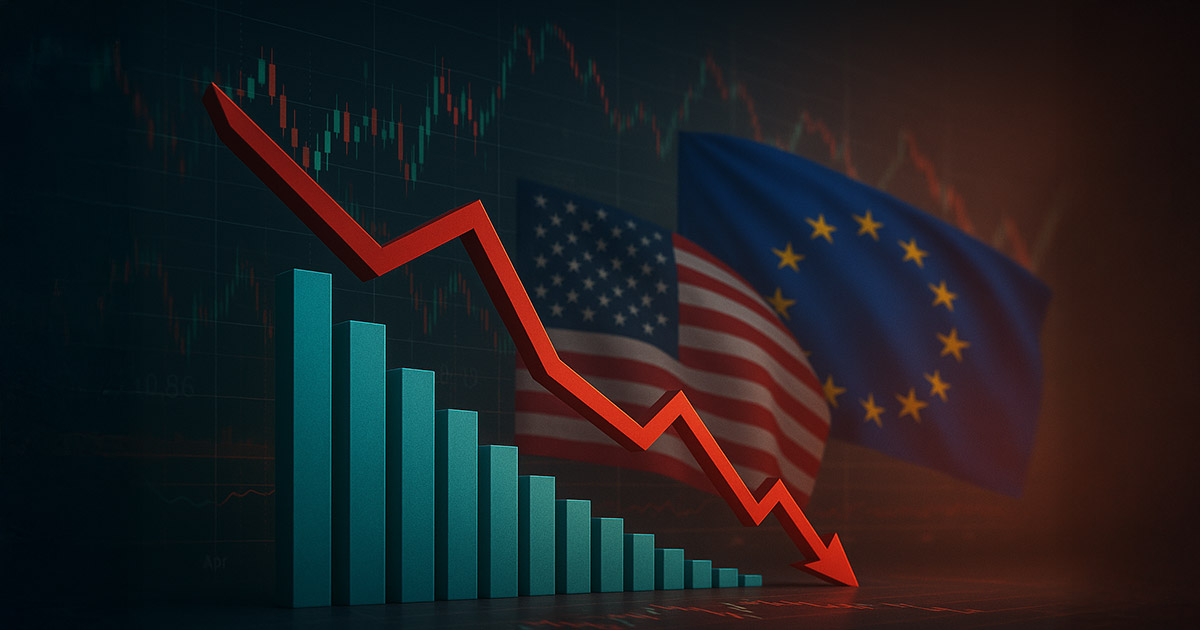Increased market volatility as the U.S.–Europe tariff deadline looms

As the August 1 deadline for a U.S.–Europe tariff deal approaches, talks between the Trump Administration and the European Union have reached a critical stage, and investors are hopeful that a deal will be reached in time to calm global markets.
Investors hold their breath for a U.S.–Europe tariff deal
The U.S. and EU are reportedly closing in on a deal that would set a broad, baseline 15% tariff on European goods entering the United States, with potential exemptions for select sectors.
This follows President Trump’s prior threats to raise tariffs as high as 50% on certain imports if no agreement is reached, a move that’s kept European exporters and global investors on edge.
Some of the most contentious areas remain automobiles and parts, as well as steel and aluminum, and sensitive, high-value sectors like pharmaceuticals and semiconductors. EU officials have insisted that any agreement must deliver immediate relief on tariffs for these critical industries, rather than deferring it until the final deal is ratified. Trump told reporters on July 25:
“I would say that we have a 50-50 chance, maybe less than that, but a 50-50 chance of making a deal with the EU.”
From his statement, it’s clear that the U.S.–Europe tariff is far from a done deal, and uncertainty still hangs over the negotiations. European diplomats have signaled that while a broad framework may be agreed upon soon, a number of outcomes remain possible, including a successful deal, a temporary reprieve, or an all-out tariff escalation on August 1.
Market impacts: volatility, risk, and crypto
Investors have reacted to the prospect of a deal with cautious optimism, hoping that even a partial agreement can reduce trade uncertainty that has weighed on European equity markets and global supply chains since Trump’s initial tariff announcements in April. U.S. stocks have hovered near record highs as traders price in a higher likelihood of a U.S.–Europe tariff relief, though volatility is expected to tick up as the deadline approaches.
Trade tensions and tariff threats typically fuel concerns about economic slowdowns, stagflation, and disruptions to both the dollar and euro, increasing volatility across markets. Crypto assets, particularly Bitcoin, often benefit in such climates as global investors look for alternatives that are independent of any single government’s policy.
Previous escalations in U.S.–China and U.S.–EU trade spats have prompted spikes in BTC trading volumes and strengthened the narrative of Bitcoin as a mature asset and a “hedge” against geopolitical and monetary uncertainty. However, as noted by Koinly:
“If confidence in national currencies or markets drops, people might move into crypto to preserve their wealth. However, this behavior is not consistent and depends heavily on sentiment.”
Should tariff escalation continue or uncertainty persist, we might expect some renewed momentum for Bitcoin and crypto as safe-haven assets and stores of value, similar to gold. Conversely, a last-minute trade deal could restore some calm to traditional markets, potentially dampening the crisis premium that sometimes serves to boost crypto and even seeing a potential short-term slump.
[title_words_as_hashtags






